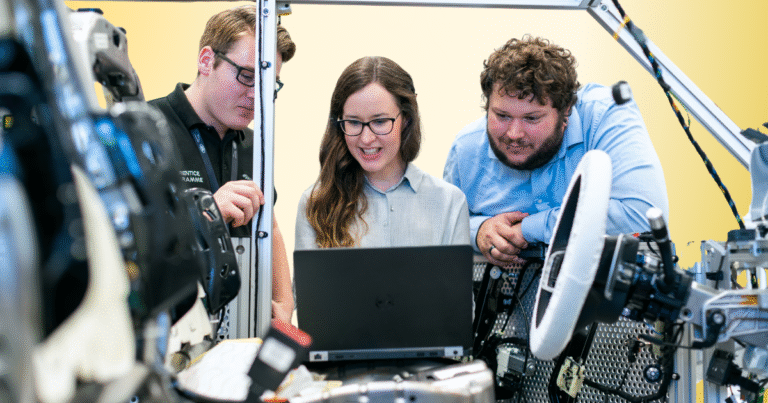Introduction: Why Software Testing Matters
Think about the last time you downloaded a new app or updated your favorite software. Did it run smoothly, or did it give you headaches with crashes and errors? If it worked well, that’s thanks to software testing.
Software testing basics is the behind-the-scenes process that makes sure programs not only work but also provide a smooth and safe experience. Without testing, apps would be unreliable, companies would lose money, and users would quickly look for better alternatives.
If you’re curious about what testing is all about, this guide will walk you through the fundamentals, different testing approaches, common tools, and tips to help you get started.
What Is Software Testing?
At its core, software testing basics is the process of checking a program to make sure it works as intended. But it’s not just about finding mistakes. Testing helps prevent problems, improve performance, and confirms that the software meets user needs.
Think of it as both a safety net and a quality guarantee. Developers can release their work with confidence, businesses can protect their reputation, and users can trust the product.
Why Is Software Testing Important?
Skipping testing is like building a house without checking the foundation. The risks are huge. One bug can lead to financial losses, security breaches, or frustrated customers.
In 2017, British Airways suffered a major system failure that cost the company millions. Many other businesses have faced security incidents because a vulnerability wasn’t caught in time. These are reminders of how critical proper testing really is.
On the positive side, testing ensures quality, reduces costs by catching issues early, keeps users happy, and helps businesses meet industry regulations where reliability and safety are required.
Manual and Automated Testing
Beginners usually start by learning about the two main approaches: manual testing and automated testing.
Manual testing is done by human testers who explore the software step by step. It’s ideal for smaller projects and situations where the tester’s intuition and creativity matter. For example, someone might click through a website to see if all the links work properly. The drawback is that it takes time and doesn’t scale well for very large applications.
Automated testing relies on scripts and tools to run checks automatically. It’s perfect for repetitive tasks and large projects. Imagine a script running hundreds of login attempts to see how the system responds. Setting up automation takes effort, but once in place, it saves time and reduces human error.
Most companies today combine both approaches to get the best of human insight and machine efficiency.
Key Types of Testing
There are many different kinds of testing, but beginners should focus on a few core ones.
Functional testing checks if the software does what it’s supposed to. For example, does the sign-up form actually create a new account?
Non-functional testing looks beyond features to focus on performance, security, and usability. An example would be checking if an app can handle a thousand users logging in at the same time.
Unit testing examines individual components of the software. Think of testing the “add to cart” button in an online store before combining it with the checkout process.
Integration testing checks how different pieces work together, such as connecting the cart with the payment system.
System testing looks at the entire program from end to end. For an online shop, this would involve browsing, adding items to the cart, paying, and confirming delivery.
Finally, user acceptance testing puts the software in the hands of real people before launch. Their feedback shows whether the product meets expectations in real-world use.
The Testing Life Cycle
Testing follows its own process, often called the Software Testing Life Cycle or STLC. The steps usually include:
Requirement analysis, where testers understand what needs to be checked.
Test planning, which defines the strategy, resources, and schedule.
Test case development, where step-by-step test instructions are written.
Setting up the test environment with the right tools and systems.
Test execution, when the actual tests are run.
Defect reporting, where any bugs are logged.
Test closure, which wraps up the process with reports and results.
This structured approach makes sure nothing is overlooked.
Skills Every Beginner Needs

You don’t need to be a computer science graduate to become a tester, but a few skills go a long way. Analytical thinking helps you spot problems that others might miss. Attention to detail is crucial because even a small bug can cause a major issue. Good communication skills allow you to explain problems clearly to developers. A basic understanding of how software development works also helps you fit into the bigger picture. Finally, curiosity and a willingness to explore new tools and methods will keep you moving forward.
Popular Tools for Beginners
Testers often work with specialized tools to make their job easier. Selenium is one of the most popular tools for automated web testing. JIRA is widely used to track bugs and manage projects. Postman is great for testing APIs. TestRail helps with managing test cases, while Appium focuses on mobile applications.
If you’re new, start with the simpler and free tools. You can always explore advanced ones later as you gain experience.
Real-World Examples
Testing plays an important role in everyday applications. Banking apps rely heavily on security testing to protect user accounts. E-commerce platforms run performance tests to avoid crashes during big shopping events. Healthcare software undergoes strict functional testing to ensure medical records and prescriptions are accurate.
These examples show how testing directly affects safety, trust, and customer satisfaction.
Learning Path for Beginners
If you’re ready to dive in, start small. Practice manual testing on websites or apps you already use. Learn the common terms like regression testing and bug reports. Join online communities where testers share advice and experiences.
Free courses on platforms like Coursera or Udemy are excellent starting points. You can also find plenty of tutorials on sites such as Guru99. Document your work as you go; a portfolio of test cases and bug reports can help you stand out when applying for jobs.
Contributing to open-source projects is another way to gain real-world experience while helping the community.
Career Growth in Testing
Testing is not just an entry-level job. Many people begin with manual testing and then transition to automation engineering. Others specialize in areas like performance or security testing. There are also opportunities to grow into leadership roles, such as a QA manager.
With modern development approaches like Agile and DevOps, testers are now integral to the team from the outset, making their role more crucial than ever.
Common Challenges for Beginners
New testers often feel overwhelmed by the technical jargon. Creating a simple glossary of terms can help. Some worry about not having strong technical skills, but starting with the basics of databases or web design can make a big difference.
Another challenge is the lack of real-world projects to practice on. Open-source contributions and volunteer work are great ways around this. Finally, balancing manual and automated testing can be tricky, but focusing on manual first and then slowly adding automation is usually the best approach.
Conclusion
Software testing basics is about more than finding bugs. It ensures that software is reliable, secure, and user-friendly. By learning the basics, practicing with tools, and following a structured process, beginners can quickly build confidence and move toward a rewarding career.
Every app, website, or system you use has gone through testing. It’s the reason you trust it. If you enjoy problem-solving, have an eye for detail, and want to contribute to building better technology, software testing might be the perfect path for you.



